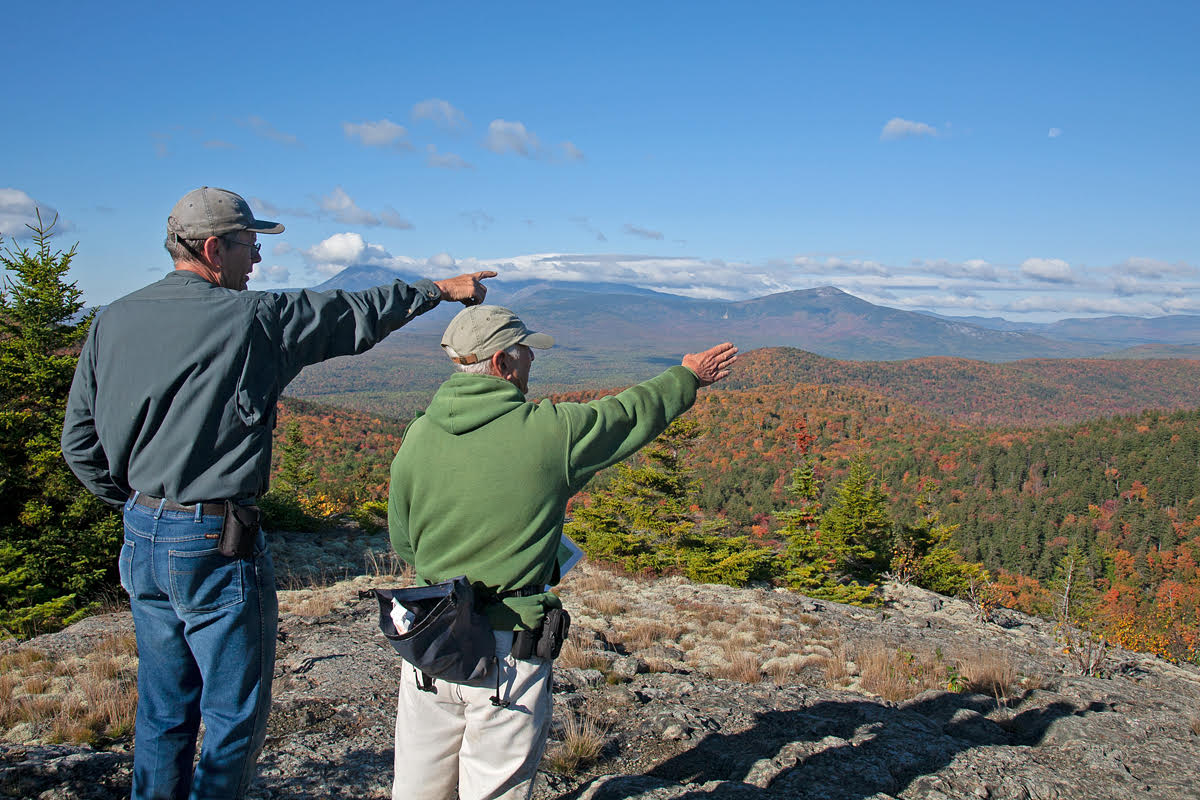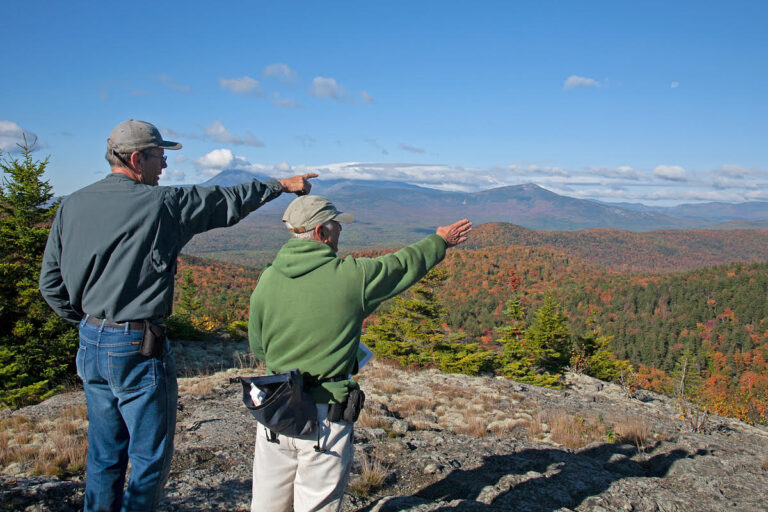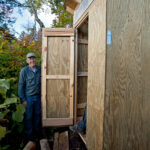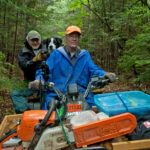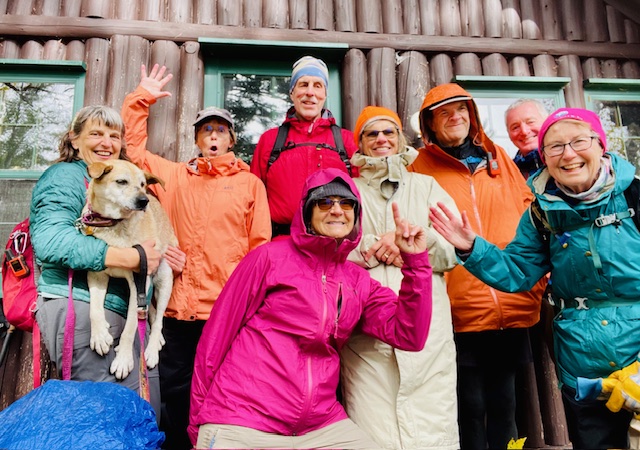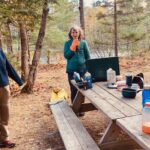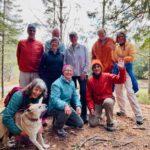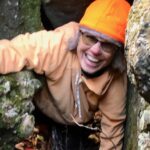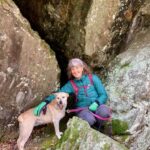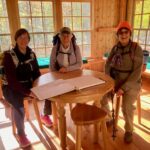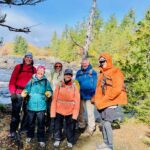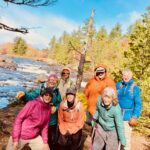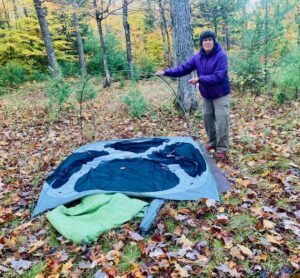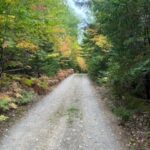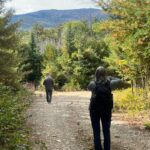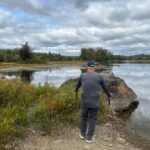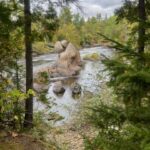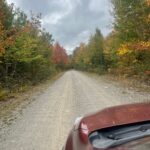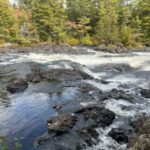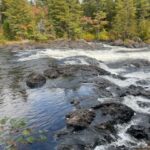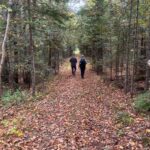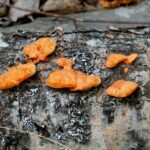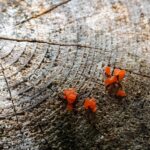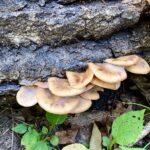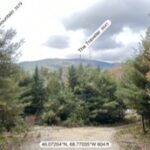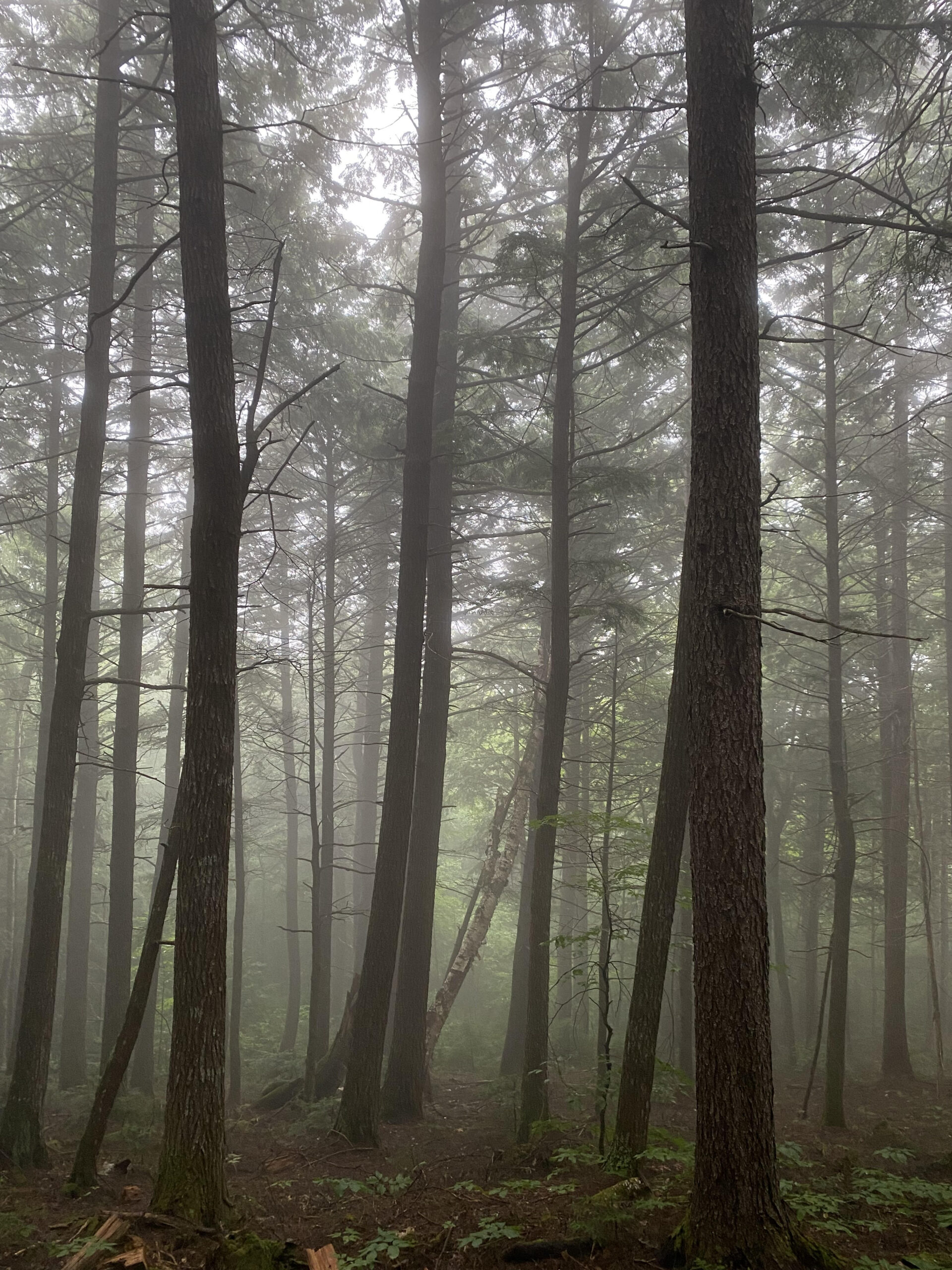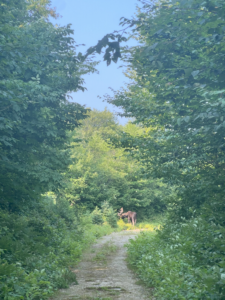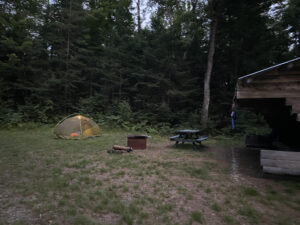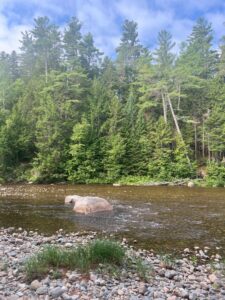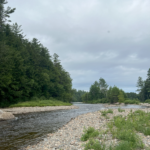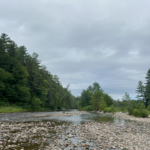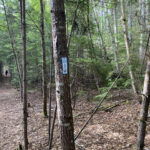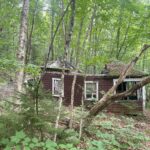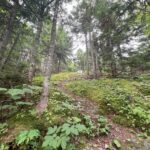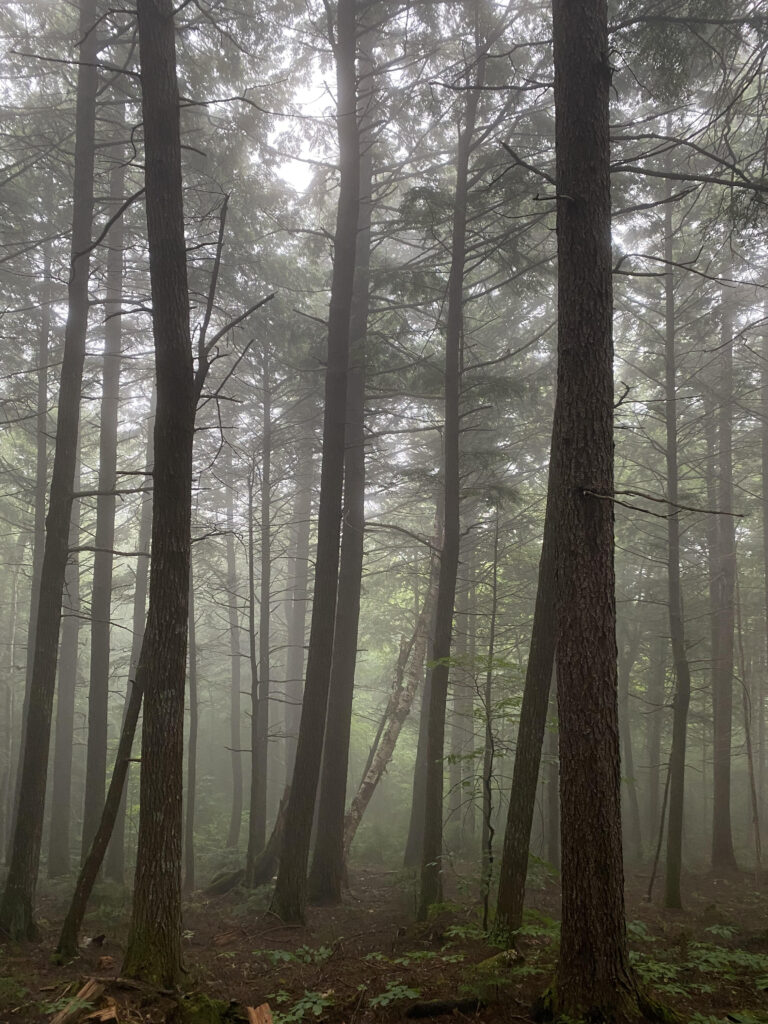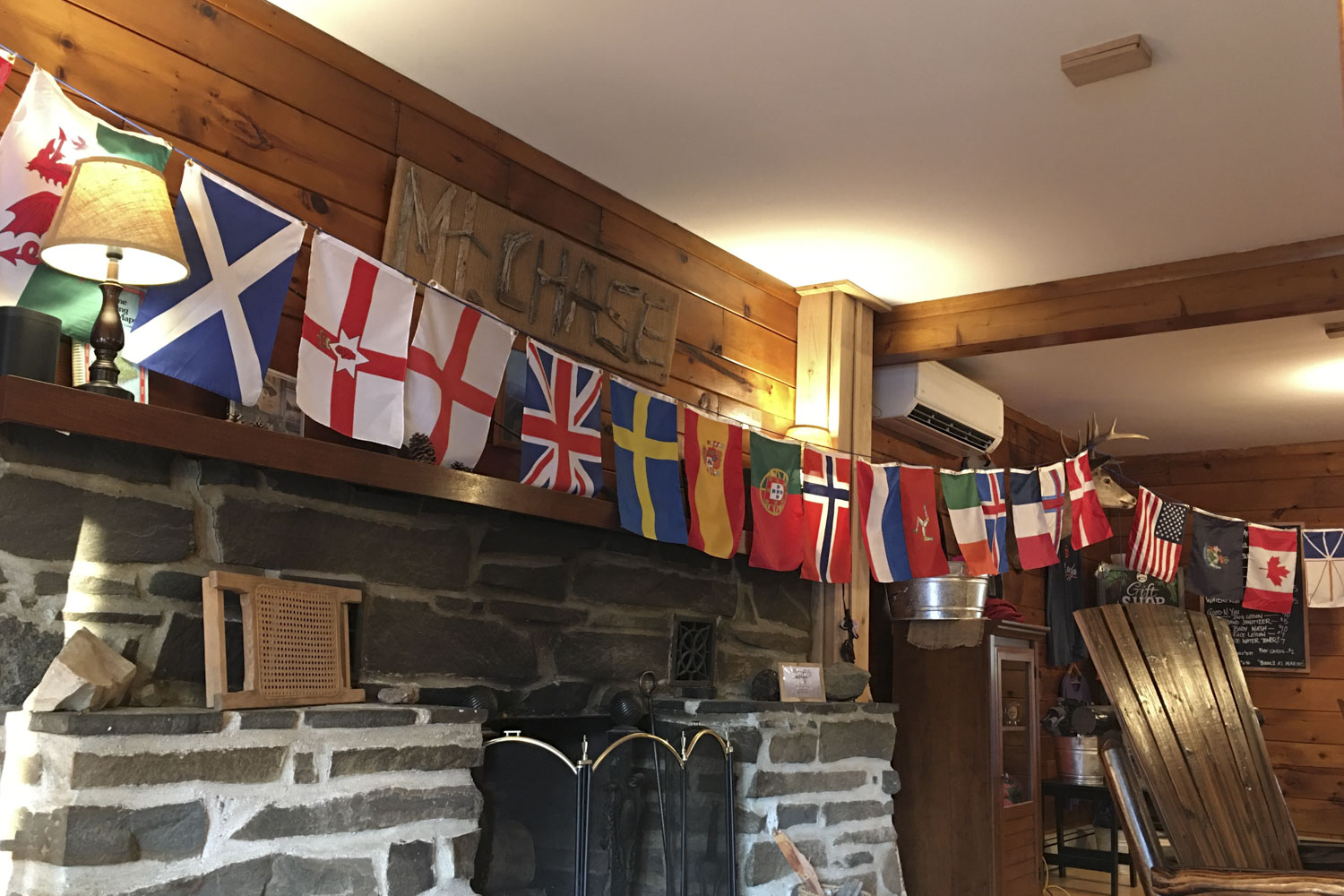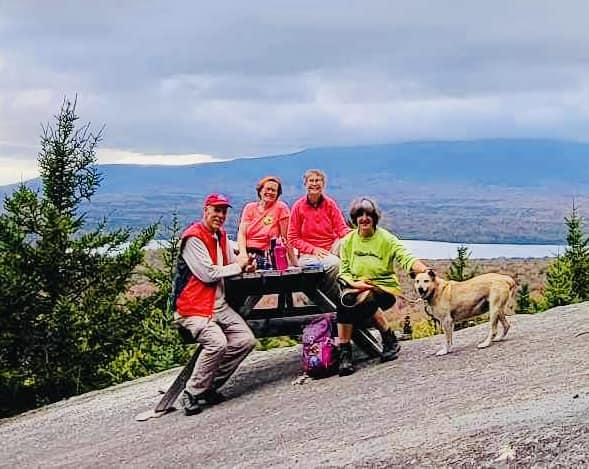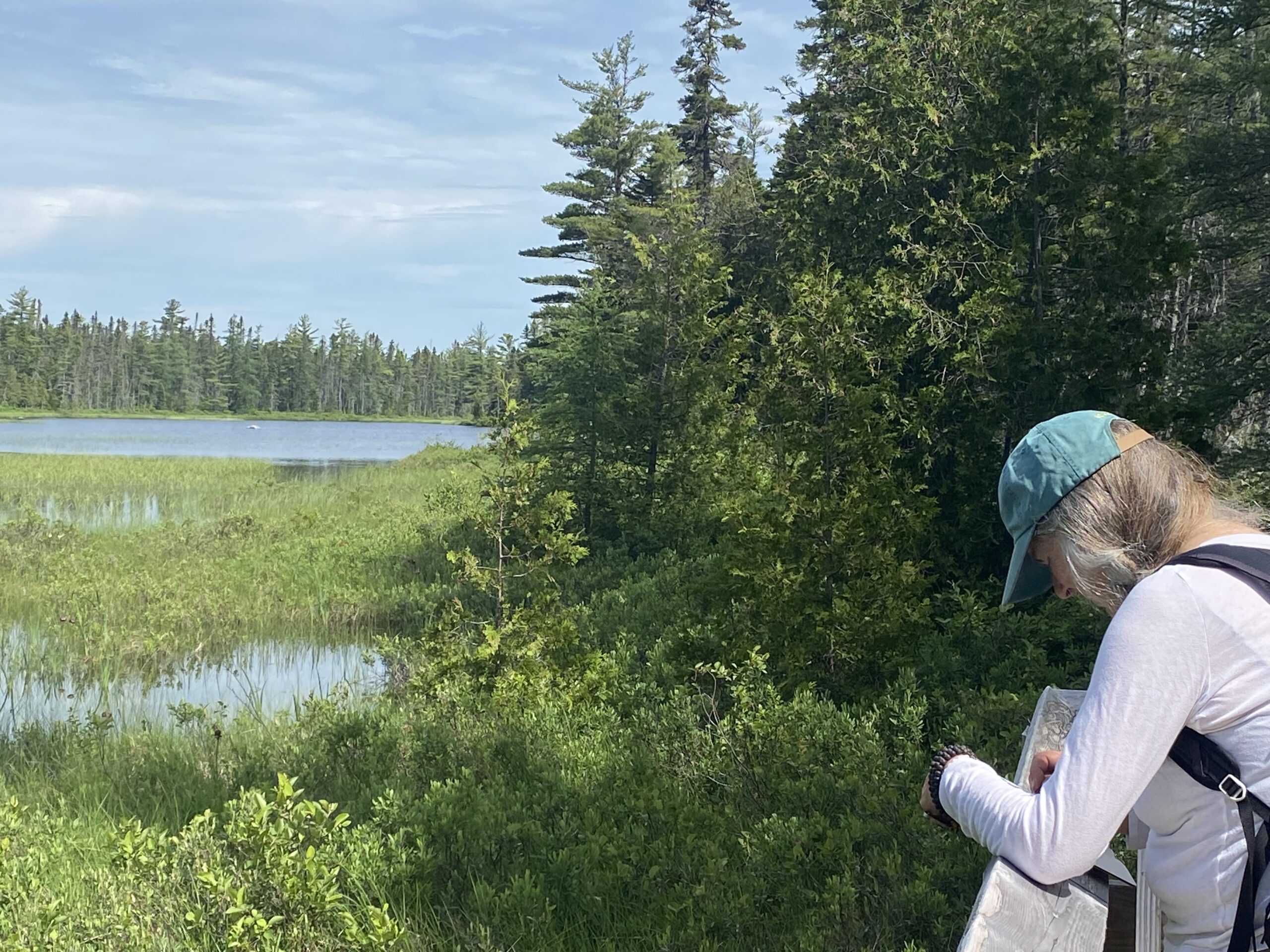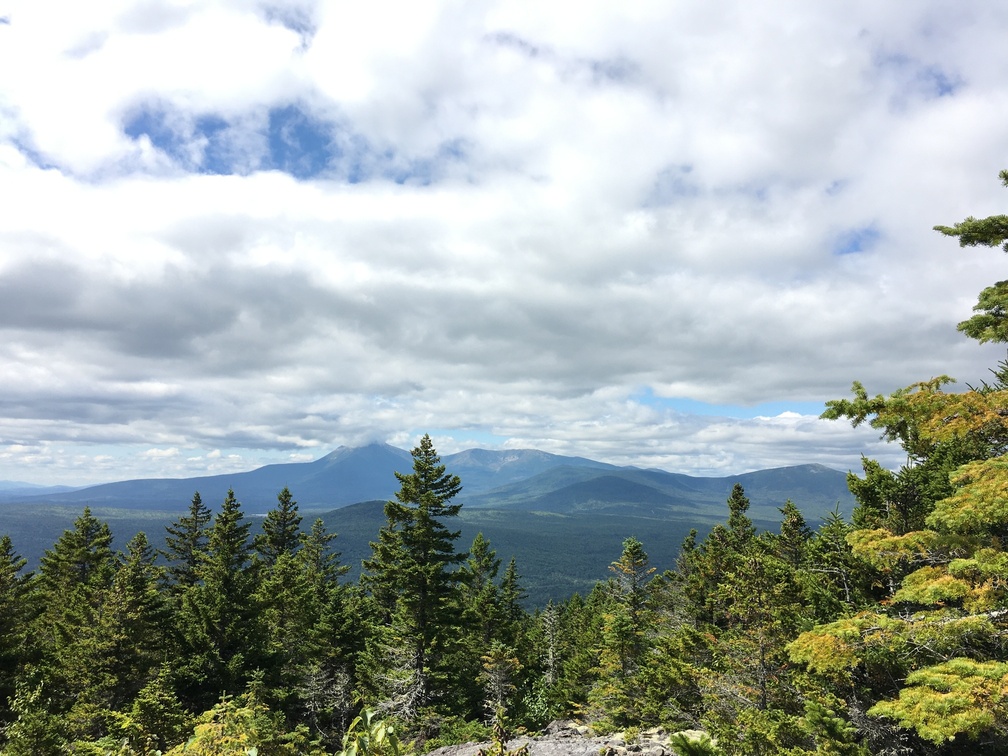Why is there so much road walking on the Maine section of the IAT?
This is an incredibly fair question with an equally fair answer: throughout its existence, the Maine chapter of the IAT has relied on the generosity of landowners to secure the route for the trail. In the early years of the project, the owners of Mars Hill Mountain were the first to sign an agreement that allowed the IAT to cross their land. Permission to use the 20’-wide international border swath between Mars Hill and Fort Fairfield followed quickly. A $5,000 grant allowed for the purchase of materials to build the first lean-to on Mars Hill. The materials needed for the lean-to near Fort Fairfield were donated, as were the next 7 lean-tos built for the trail. In all cases, volunteers contributed the labor to create the campsites and improve the trail. In contrast, the Quebec chapter of the IAT was given hundreds of thousands of dollars to build the infrastructure needed to support the trail located largely on publicly owned ‘Crown’ land. The route in Quebec was secured and all campsites were built by June 2001 because of this significant public investment. Over the past 30 years, and without significant public financing, the Maine chapter has worked hard to move the trail off public roadways. What follows is a brief history of the major land acquisitions that transformed the route of the IAT in the land east of Baxter State Park.
The original goal of the IAT was to connect the highest points in Maine, New Brunswick, and Quebec. This meant, ideally, starting at the summit of Mount Katahdin, which remains within the boundaries of Baxter State Park (BSP). However, issues around park capacity and limited infrastructure were cited as reasons to prevent the IAT from marking permanent trails within the park. In contrast, Forillon National Park in Quebec worked with the IAT to establish and mark existing trails. This kind of public support was not offered to the IAT in Maine until the land east of Baxter was donated to the United States to create Katahdin Woods and Waters National Monument.
In the early years of the IAT in Maine Baxter State Park Director Buzz Caverly and IAT Founder Dick Anderson agreed that IAT hikers could make their way on park trails so long as they had campsite reservations for their time in the park. Thru-hikers could reserve access to shelters to utilize around 47 miles of trails through the park. The route would then pick up on Grand Lake Road at the northern boundary before connecting to Route 159. This route is shown in green on Map 1. For those who were unable to reserve lean-tos, the IAT led from the southern boundary of the park, connecting with the AT at Abol Bridge. This route––a road walk––followed the Golden Road and Routes 157 and 11, shown in pink on Map 1.

In addition to negotiations with Baxter State Park, the IAT also met with the succession of landowners, including Great Northern Paper Company and JD Irving, in the effort to shift the trail from the side of the road into the woods east of the park. These conversations and negotiations stalled or ended quickly in large part because the landowners were wary of working closely with the IAT due to difficulties they experienced when the AT became a National Scenic Trail in the late 1960s. One such negotiation for access to land east of Baxter State Park ended with laughter on the company’s part because of how little money the IAT offered for a trail easement.
This situation would change once Elliotsville Plantation, Inc. (EPI) entered the picture in 2003. Even as the relationship with Baxter State Park and the IAT improved, the IAT was still unable to establish permanent trails within the park. Fortunately, the land east of the park, though heavily cut over, was the perfect place for establishing a permanent trail. Roxanne Quimby, founder of Burt’s Bees and EPI, began her acquisition of land east of Baxter by purchasing T5R8 township and a portion of T3R8, the latter including the summit of Deasey Mountain, outlined in red on Map 2. She was very open to collaborating with the IAT from the beginning of her ownership. By 2007, the IAT had signed Memorandums of Understanding with EPI the trail and campsites. The IAT was then able to establish a permanent trail, starting at a ford of the Wassataquoik Stream and ending at the summit of Deasey. As EPI purchased more land in the area, which included swapping property with a landowner, the IAT was able to construct the route we have today by 2008, shown in purple on Map 2. Further collaboration with the Quimby Family Foundation resulted in grants to fund work trips, trail building, and trail guides. Trail development in Maine has been funded largely by individuals, private corporations and foundations, without the provincial and federal support provided the Quebec and New Brunswick chapters.

Sophie Leigh, a student at McGill University in Montreal, wrapped up her Maine IAT internship in late July. The internship is open to Maine and other United States students at McGill by a generous Maine alumnus of the university, John Wasilewski. Sophie spent hours pouring through the Maine IAT archives at the Maine Historical Society in Portland to understand how the trail came to be, and especially how the route evolved over the years. Sophie also spent time helping to clear and maintain the section of trail from Wassataquoik Stream to the summit of Deasey, and that particular experience likely inspired this blog post.


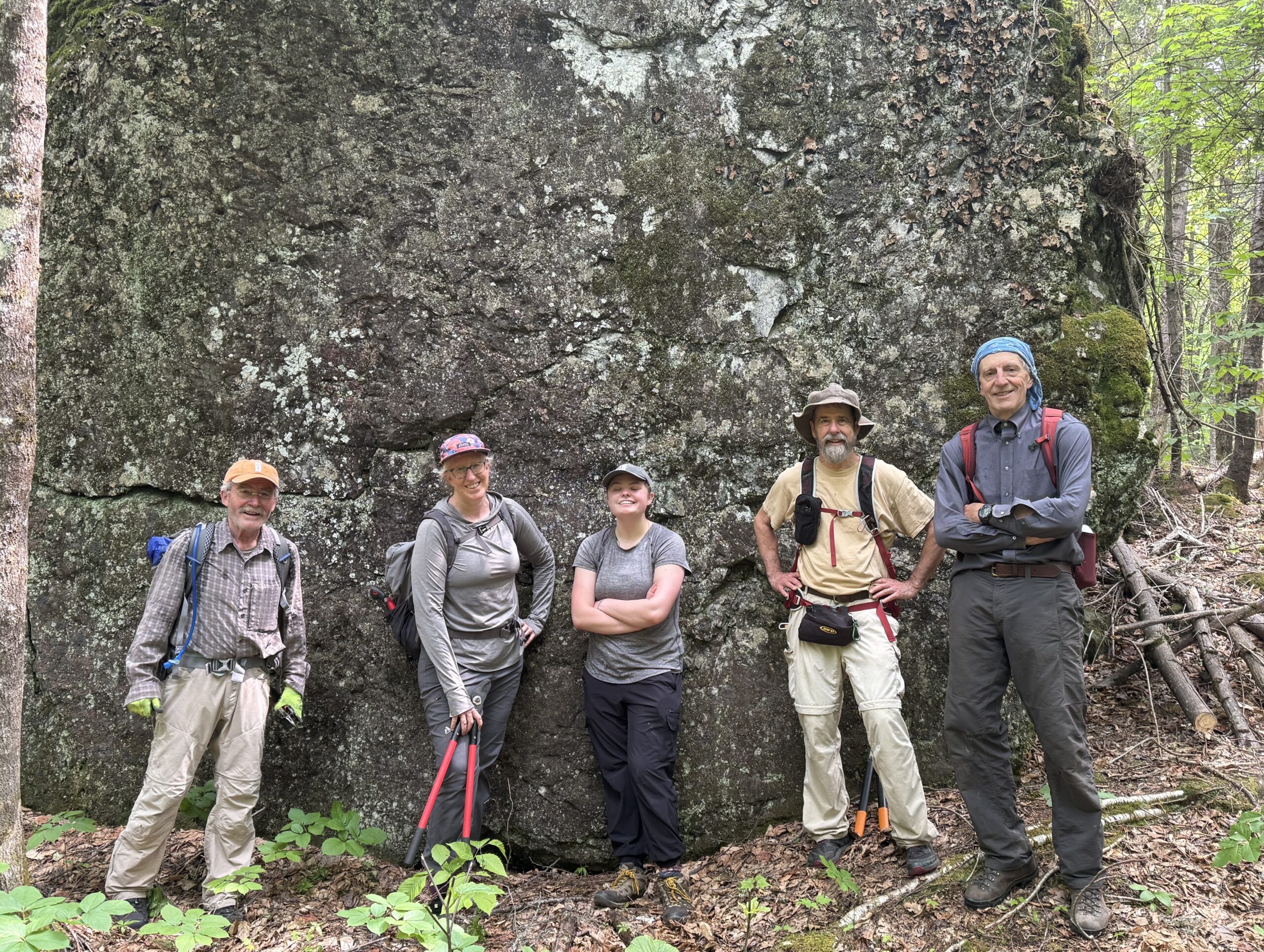
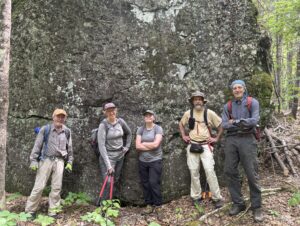
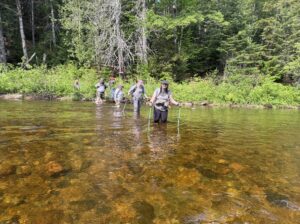
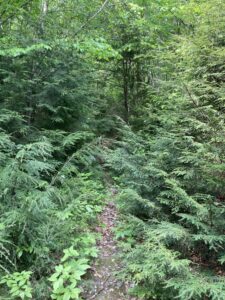
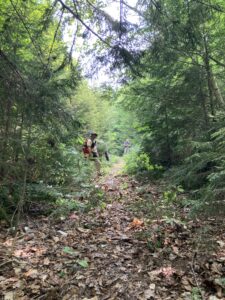
![Jas, Sophie, Bill, and Julia learning about how the map would have been used to locate fires (thank you, Bill, for the lesson!)]](https://www.maineiat.org/wp-content/uploads/2025/06/Photo-6-150x150.jpg)
![Jas, Sophie, Bill, and Julia learning about how the map would have been used to locate fires (thank you, Bill, for the lesson!)]](https://www.maineiat.org/wp-content/uploads/2025/06/Photo-5-1-150x150.jpg)
![The dinner table we returned to after a long day. Again, thank you, Nancy!] The dinner table we returned to after a long day. Again, thank you, Nancy!]](https://www.maineiat.org/wp-content/uploads/elementor/thumbs/Photo-7-scaled-r7jklrevjwmdd1txwidaf2q62jdkzk7jiytzng97f4.jpg)
